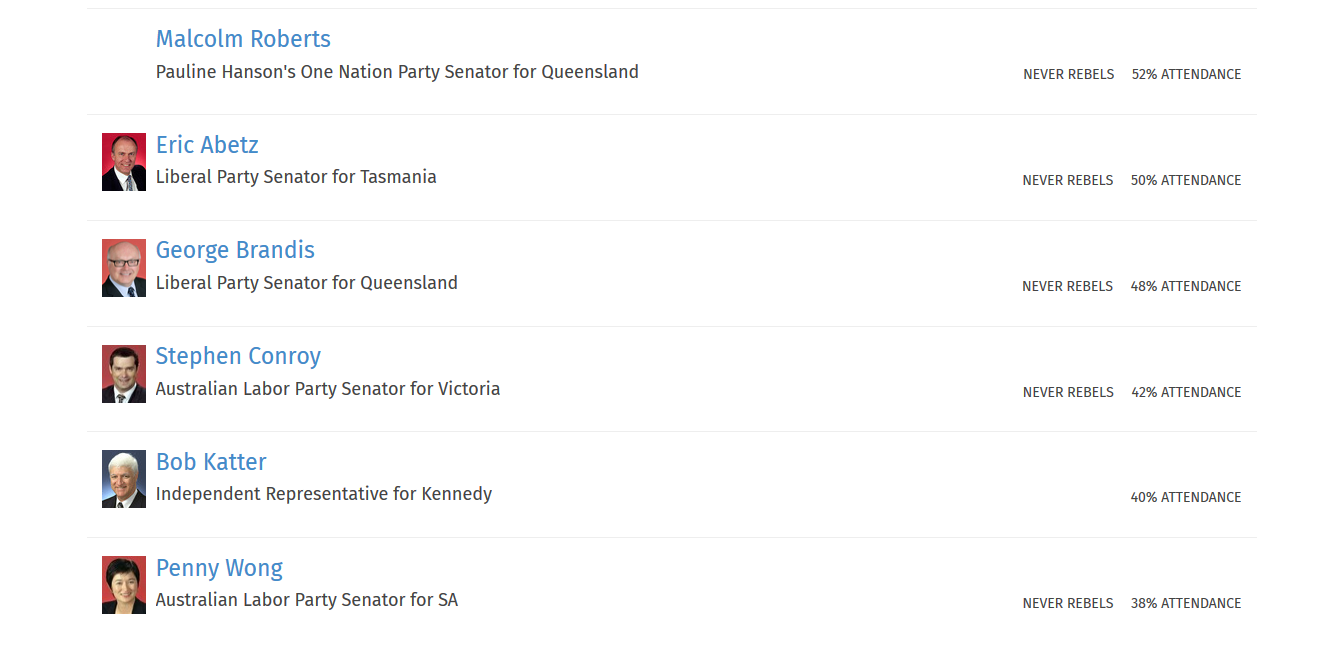Attendance levels in Parliament vary a lot. With the 45th Parliament just a few weeks in, our parliamentary vote tracking website They Vote For You is currently listing some federal politicians with 100% attendance and some with as low as 38% attendance.
But what do these figures actually tell us and how accurate are they?
The whole picture?
The attendance figures on They Vote For You do not give us the whole picture. Why? Because our Parliament only records who is actually in the room and voting when a division (or formal vote) takes place. During a division, our Members of Parliament (MPs) and Senators walk to either side of their chamber to show how they are voting. One side is for the ‘no’ voters and one side is for the ‘aye’ or ‘yes’ voters. Their names are recorded and that is the data used by They Vote For You.
However, this leaves a big gap in our records since there are some days in Parliament when no divisions take place. Instead, most voting in Parliament takes place ‘on the voices’, which is when our MPs and Senators shout ‘no’ or ‘aye’ and whoever shouts the loudest wins.
This means that most of the time we don’t know who is present in Parliament and who isn’t. The information we have is limited to when formal votes take place.
Then there is the issue of pairing in both the House of Representatives [218 KB] and the Senate. Sometimes when an MP or Senator knows they are going to be absent, their party will arrange for them to be paired with another MP or Senator who planned to vote the other way. For example, if a Coalition member is going to be absent for a particular division in which they were going to vote ‘aye’, a Labor member who intended to vote ‘no’ may be paired with them. This means the Labor member will not vote in the division either so that the Coalition member’s absence doesn’t affect the result of the division. Pairing arrangements like these are informal and not part of parliamentary procedure. They can last for just one vote or be an ongoing arrangement.
Ministers often have lower attendance rates because their other duties keep them from Parliament. This can also affect members of the opposition who are regularly paired with Ministers and so bring down their attendance figures.
So what’s the point in having attendance figures if they don’t give us the whole picture?
Even the limited attendance data made available by Parliament can tell us a lot about our elected representatives and how well they are representing our interests in Parliament. This is especially true for citizens whose representatives are independents, members of the smaller parties or backbenchers.
Absent politicians cannot properly represent their constituents. The lower their attendance figures, the less likely they are doing their jobs properly. Of course, they may have perfectly good reasons for being absent and may have arranged for a pair so that their absence doesn’t affect the ultimate outcome of a given division. Or they may not have. The only way to know for sure is to draw their attention to their attendance figures and ask them for an explanation.
Without these attendance figures, we wouldn’t be able to hold our representatives to account for their absences.
As the 45th Parliament continues, keep an eye on whose attendance figures are dropping below 50%. And if it’s your MP or Senator, perhaps it’s time to contact them and ask them to “please explain”.
